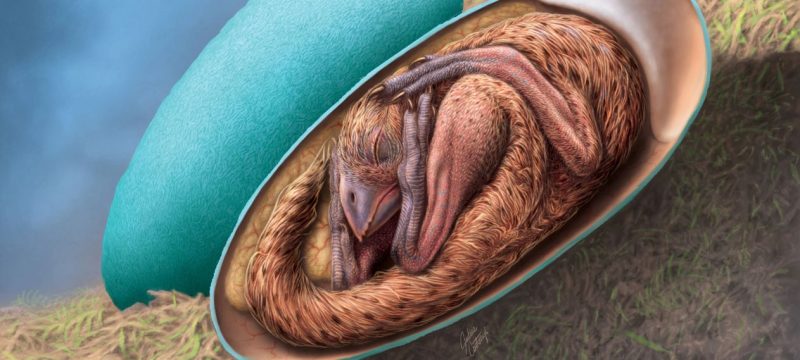In a groundbreaking discovery, paleontologists have unveiled an exquisitely preserved dinosaur embryo, dubbed “Baby Yingliang,” offering unprecedented insights into the evolutionary connection between dinosaurs and modern birds.
Discovery and Preservation
Unearthed in 2000 in Ganzhou, Jiangxi Province, southern China, the fossilized egg containing the embryo was initially acquired by the Yingliang Group and stored for over a decade.
Read more: Unveiling Nature’s Wonders: Mind-Bending Science Facts That Will Leave You Amazed
It wasn’t until 2015, during preparations for the Yingliang Stone Natural History Museum, that researchers recognized the significance of the specimen. Detailed analysis revealed a nearly intact oviraptorid embryo curled in a life-like posture within the egg, measuring approximately 27 centimeters in length inside a 17-centimeter-long egg .
Significance of the Find
The embryo’s posture—head tucked under the body, feet on either side, and back curled toward the egg’s blunt end—mirrors the “tucking” behavior observed in modern bird embryos shortly before hatching. This behavior, previously considered unique to birds, is crucial for successful hatching and is controlled by the central nervous system. The presence of this posture in a non-avian dinosaur suggests that such prehatching behaviors may have originated among theropod dinosaurs .
Evolutionary Implications
This discovery reinforces the evolutionary link between non-avian theropods and birds, indicating that behaviors associated with avian species may have deeper roots in dinosaur lineage. The exceptional preservation of Baby Yingliang allows scientists to study embryonic development stages in dinosaurs, offering a rare glimpse into their reproductive biology and growth patterns .
Future Research
While Baby Yingliang provides valuable information, researchers emphasize the need for additional well-preserved dinosaur embryos to determine the prevalence of such behaviors across different species. Further studies could illuminate the evolutionary timeline and diversification of reproductive strategies among dinosaurs .
Conclusion
The discovery of Baby Yingliang not only showcases the remarkable preservation of dinosaur embryos but also bridges a crucial gap in understanding the evolutionary transition from dinosaurs to modern birds. As research continues, this find may redefine our comprehension of dinosaur behavior and development.









